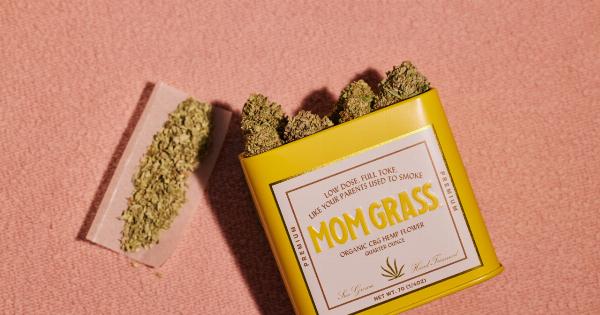Choosing to undergo cosmetic procedures, such as Botox injections, has become increasingly popular in recent years. Many people are drawn to the allure of looking younger and reducing wrinkles quickly and easily.
However, despite its widespread use, Botox is not without its drawbacks. In fact, opting for Botox can sometimes lead to unexpected and unfavorable results, making you look worse than before. In this article, we will explore the potential downsides of Botox treatments and why it may not be the right choice for everyone.
1. Limited effectiveness
Botox has gained popularity due to its ability to temporarily reduce the appearance of wrinkles. However, its effectiveness is limited to certain types of wrinkles, namely those caused by muscle movement.
Dynamic wrinkles, such as crow’s feet and frown lines, tend to respond well to Botox treatment. However, static wrinkles, which are present even at rest, may not see much improvement with Botox injections. Hence, if your wrinkles are predominantly static, Botox might not provide the desired outcome.
2. Unnatural facial expressions
One of the main concerns with Botox is the potential for unnatural facial expressions. When injected improperly or in excessive amounts, Botox can lead to a frozen or expressionless appearance.
While some individuals may prefer this look, many others desire a more natural and expressive face. Botox-related expression alterations can negatively impact your ability to convey emotions and may even make social interactions awkward or uncomfortable.
3. Adverse side effects
Like any medical procedure, Botox injections carry the risk of adverse side effects. While these side effects are generally temporary, they can still be inconvenient or uncomfortable.
Common side effects include bruising, pain or discomfort at the injection site, headaches, and flu-like symptoms. In rare cases, more severe complications can occur, such as drooping eyelids, blurred vision, or difficulty swallowing. It is vital to weigh the potential risks and benefits before deciding to undergo any cosmetic treatment.
4. Temporary results
Another factor to consider is that Botox provides only temporary results. Typically, its effects last for three to six months before requiring additional injections.
This means that repeated treatments are necessary to maintain the desired look, which can become both time-consuming and expensive. If you are seeking a more permanent solution to aging or wrinkles, Botox may not be the ideal choice.
5. Limited versatility
Botox is primarily used for cosmetic purposes related to wrinkles, but its applications are relatively limited. It is not effective in treating other common signs of aging, such as skin laxity or sunspots.
Furthermore, Botox cannot address other facial concerns such as volume loss, thin lips, or under-eye bags. If you have a range of different aesthetic concerns, Botox alone may not be able to provide the comprehensive results you desire.
6. Allergic reactions
While allergic reactions to Botox are rare, they can still occur. Some individuals may be particularly sensitive to the toxin or other components present in Botox injections.
Allergic reactions can manifest as itching, hives, swelling, or difficulty breathing. If you have a history of allergies or have experienced adverse reactions to similar products in the past, it is crucial to disclose this information to your healthcare provider prior to receiving Botox treatments.
7. Missed facial expressions cues
Facial expressions play a vital role in communication, as they convey emotions and intentions. Choosing to undergo Botox injections can potentially limit your ability to express and interpret facial cues accurately.
Subtle nuances, like a slight smile or raised eyebrow, may become challenging to convey due to the paralysis effect of Botox on certain facial muscles. This may result in misunderstandings or miscommunication in social and professional interactions.
8. Dependency
Some individuals become dependent on Botox treatments as they see the effects wear off. This dependency can stem from a fear of returning to their natural appearance or feeling less confident without the temporary improvements provided by Botox.
Over time, this reliance on Botox can lead to a distorted self-image and a constant pursuit of an artificial look, which may not align with your true self or ideals of beauty.
9. Inconsistent and unpredictable results
Individual responses to Botox can vary significantly. This means that the same treatment can lead to vastly different outcomes for different individuals.
Some people may experience the desired wrinkle reduction, while others may see minimal improvements or even new wrinkles forming in unexpected areas. The inconsistency and unpredictability of results make it challenging to guarantee a satisfying outcome.
10. Long-term effects still unknown
While Botox has been used for cosmetic purposes for several decades, the long-term effects of repeated injections are still largely unknown.
Since Botox temporarily paralyzes muscles, its long-term impact on muscle function and overall facial aging remains uncertain. As a relatively new cosmetic treatment, the potential risks associated with regular and long-term use of Botox are not yet fully understood.
Conclusion
Choosing to pursue Botox injections is a personal decision that should be made after careful consideration of the potential drawbacks and risks. While Botox can be an effective and convenient solution for some, it is not without its downsides.
The limited effectiveness, unnatural facial expressions, adverse side effects, temporary results, and unknown long-term effects are all factors worth contemplating. Furthermore, Botox’s limited versatility and potential for allergic reactions should be taken into account.
Ultimately, it is important to consult with a qualified healthcare professional who can provide accurate information and guidance regarding your specific aesthetic goals and concerns.































